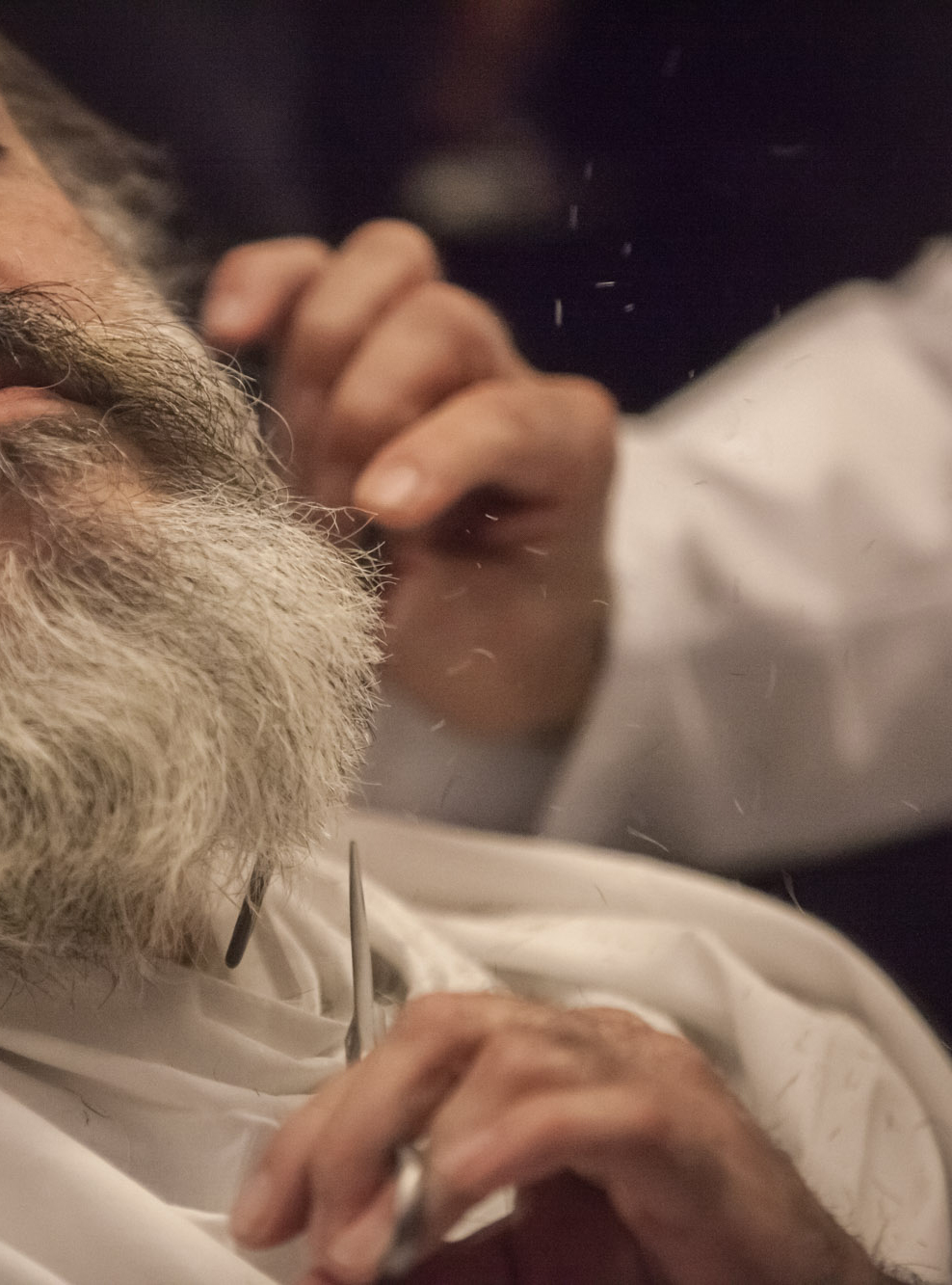In the previous blog post we talked about how to grow a beard and those who read it, or tried to, know that it’s no easy feat.
If you happen to succeed and don’t want to undermine the efforts, it’s time to discuss how to take care of your beard.
First of all it’s worth repeating that the beard needs to be washed regularly, for two main reasons:
- to eliminate trapped food, dead skin cells and dust which tend to accumulate inside it and can lead to itchiness, or worse, infections;
- to provide the right amount of nourishment for healthy growth.
We’ll never tire of saying that the beard requires a specially formulated cleanser: the hair on the face is different than that on the head and has to be cleaned without stripping it of necessary moisture; that’s why it’s a good habit remembering to use a specific conditioner after shampooing.
In our salon we use the Darkwood Beard Shampoo and the Jojoba Oil Beard Conditioner.
Also, be sure to avoid overzealous towel drying to prevent breakage and split ends; especially during winter months, the strands already gets rubbed over and over by sweaters, scarfs etc.
Another thing to do quite often is brushing or combing the beard (depending on its length) to untangle it, remove impurities and evenly spread the sebum produced by the skin or any product applied.
Another key aspect in beard care is using an oil like our Bitter Orange Beard Dry Oil which nourishes both coarse facial hair and the skin beneath, helping to cut down on dryness, itchiness, breakage and dandruff; it also tames the beard and adds a healthy shine.
As an alternative to beard oil, for a stronger hold or in particular weather conditions (wind, sun, cold), we suggest trying the Polishing and Protective Beard Wax.
Taking care of the beard also requires to visit your barbershop occasionally: a little trim every now and then is still a necessity to keep beard lines groomed and straight and to foster healthy growth.

Beard care with the help of scissors and comb at Antica Barbieria Colla
Lastly, let’s not forget that growing healthy hair also depends on our lifestyle and above all on a varied and balanced diet with sufficient intake of Omega -3 fatty acids (which can be found for instance in salmon, dried fruit and avocado) and vitamins.

